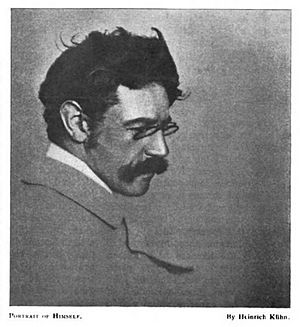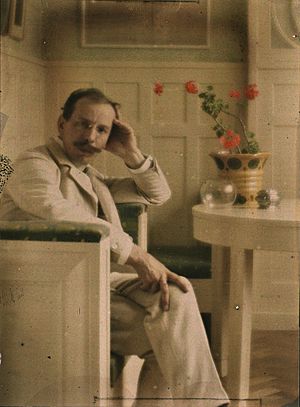Heinrich Kühn facts for kids
Carl Christian Heinrich Kühn (born February 25, 1866, in Dresden – died September 14, 1944, in Birgitz) was an important Austrian and German photographer. He was a true pioneer in the world of photography.
Pioneer of Photography
Heinrich Kühn is seen as one of the first artists to make photography a true art form. His pictures often look like soft, dreamy paintings. They use gentle lighting and a slightly blurred focus, much like the art style called Impressionism. Kühn was a key member of a group of photographers known as Pictorialists. This group believed photography could be as artistic as painting.
Kühn often used a special photo printing method called gum bichromate. He would apply this technique in several layers. This helped him create amazing colors and soft looks that were new for photos at the time.
Kühn's Inventions
Heinrich Kühn was also an inventor! In 1911, he created a technique called Gummigravüre. This method combined two other printing styles: photogravure and gum bichromate.
Later, in 1915, he developed the Leimdruck technique. This process used animal glue to create pictures that looked similar to his gum prints. He also invented something called Syngraphie. This forgotten technique used two different photo negatives. It helped capture a wider range of light and dark tones in a single picture.
Early Color Photography
From 1907, Kühn started using a new color photography process called Autochrome. His Autochrome photos are often described as "dreamy pictures of childhood." They show bright, sunny skies and fun perspectives. These photos are full of emotion and beauty.
Many of Kühn's photographs are part of the Fotografis collection. This collection was shown in Prague in 2009.



